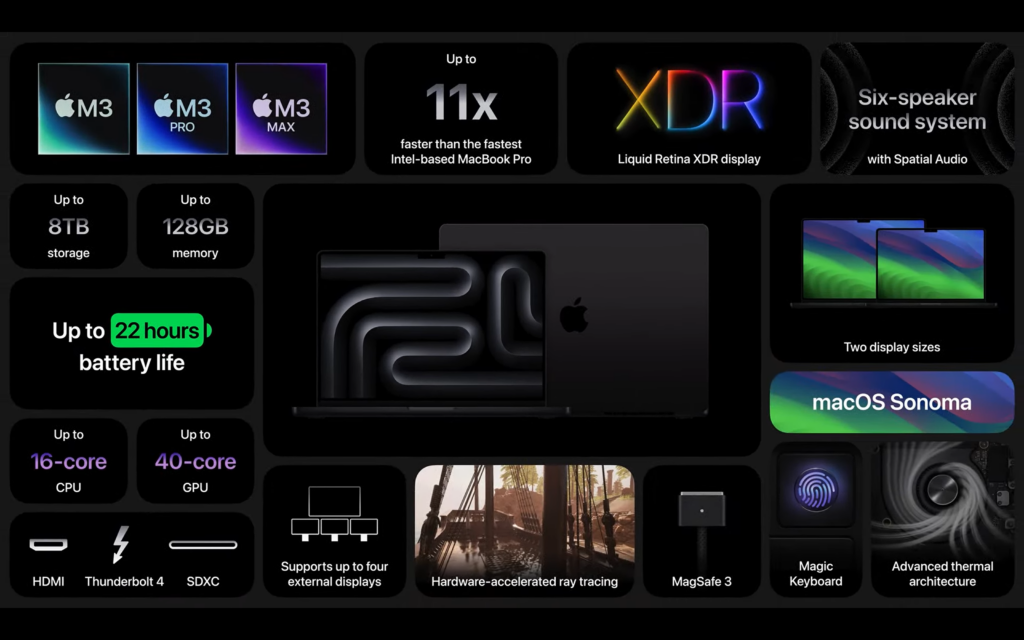The new 14-inch MacBook Pro with M3 isn’t very Pro at all

OPINION: Apple’s Scary Fast event has come and gone, and it largely played out as expected – with the M3 family launching across its Pro laptops. However, the M3 being added to the MacBook Pro range wasn’t as widely predicted. But, it doesn’t look like a great deal.
Last week, I wrote about how Apple needed to decide what it was going to do with the awkward 13-inch MacBook Pro, which it has kept around from the Intel days through M1 and M2 updates. At the October 30th event, Apple obliged. Apple now offers a 14-inch MacBook Pro with an M3 chip, rather than just being limited to the more powerful M3 Pro and M3 Max options. It’s a neat solution that makes a lot of sense – until you delve into the spec sheet.
The main issue here is the amount of unified memory. The base model of this new 14-inch MacBook Pro with M3 starts at £1,699/$1,599 yet only offers up 8GB of unified memory. Admittedly, Apple does manage to make its unified memory go further, with the benefits of its tightly integrated hardware and software ecosystem, when compared to RAM on Windows devices. But, 8GB just isn’t suitable for “Pro” work. MacBook Pro models are undoubtedly aimed at creatives and that amount just isn’t going to allow for serious editing, modelling and design work to get done.
But, why not just update it, right, if it’s not enough? It’s an option but there are two reasons it doesn’t feel like good value. First off, if you take one of our top picks for a MacBook alternative as an example, the Asus Zenbook 15 OLED, that device has 16GB RAM and 512GB SSD with a 2.8K OLED display for just under £1100. Fancy the new 14-inch M3 MacBook Pro with that amount of memory and storage? Then, you’ll be forking out £1899/$1799.

Apple Music
Apple Music gives you access to over 100 million songs and 30,000 playlists, ad-free. Listen online or off, across all your devices, and hear sound all around in Spatial Audio with dynamic head tracking. You can now try 1 month for free!
- Apple
- Get 1 month free
- £10.99 p/m
Then, let’s look inside the Apple family, if you’re already spending close to two grand on a laptop because you need to get professional work done then it makes little sense for you not to stump up the extra £200/$200 for the M3 Pro version.
This model will get you a more powerful chip, three Thunderbolt 4 ports instead of just two Thunderbolt 3 ports as well as – the most important factor here – 18GB unified memory. That higher memory will allow for much greater headroom when it comes to complex and demanding workloads, which is exactly what users expect from the MacBook Pro range.

Now, this isn’t that out of line with Apple’s upselling strategy that always tempts you to move up to the next price bracket. You’re already spending a lot of money so what’s a tad more, right? But, the initial offering has to make sense for some users or why does it exist at all? If you’re considering the new M3 MacBook Pro with only 8GB unified memory then you should really be looking at the MacBook Air to serve your needs, or waiting for the M3 chip to land on those devices. Yes, the new Pro model gets you a better display and a wider range of ports but the extra several hundred quid doesn’t quite feel worth that boost.
Apple finally ditched the awkward 13-inch MacBook Pro with its big bezels and touch bar but it’s replaced it with a whole new conundrum. 8GB of unified memory does not a “Pro” laptop make.







